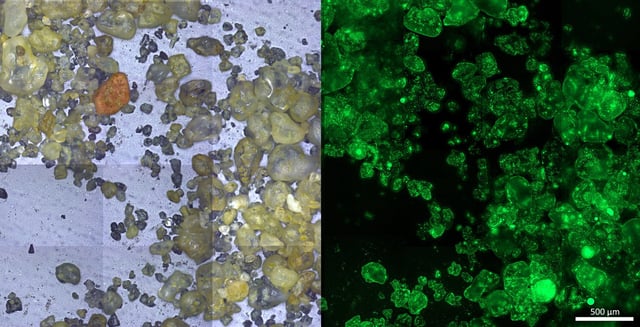Overview
- Advanced microfluidic imaging revealed tens of thousands of microbes on each sand grain, with nearby oxygen-consuming and oxygen-producing colonies creating micro-scale oxygen gradients.
- Localized oxygen depletion around microbial clusters generates anoxic pockets that enable anaerobic denitrification in waters otherwise rich in oxygen.
- Quantitative models estimate that these microscopic denitrification sites account for as much as one-third of total nitrogen loss in silicate shelf sands.
- Permeable sandy sediments cover roughly half of the world’s continental shelves and act as a significant natural filter for anthropogenic nitrogen inputs.
- Incorporating these microhabitat processes into coastal biogeochemical models is essential for accurate global nitrogen budgeting and predicting ecosystem responses to human-driven nitrogen loading.
